18 Examples of Successful Co-Branding Partnerships (And Why They're So Great)
Everyone has loyalties to their favorite brands, but there's a good chance your favorite products are the result of two separate brands working together.
One of my own beloved childhood memories was a product of co-branding: Betty Crocker partnered with Hershey's to include chocolate syrup in its signature brownie recipe.
There's something brilliant about that co-branded product: It's a fun way to marry two classic brands into one delicious experience for fans of baking and chocolate alike. In fact, these brands still create new co-branded products to this day.
Co-branding is a strategic marketing and advertising partnership between two brands wherein the success of one brand brings success to its partner brand, too. Co-branding can be an effective way to build business, boost awareness, and break into new markets, and for a partnership to truly work, it has to be a win-win for all players in the game. Both audiences need to find value -- like chocolate-loving fans of Betty Crocker and Hershey's.
There are a ton of great examples of co-branding partnerships out there. To show you what makes them so successful, we've curated a list of 13 examples of great co-branding partnerships to inspire you.
Co-Branding Partnership Business Examples
- GoPro & Red Bull
- Pottery Barn & Sherwin-Williams
- Casper & West Elm
- Taco Bell & Doritos
- Kanye and Adidas
- BMW & Louis Vuitton
- Starbucks & Spotify
- Apple & MasterCard
- Airbnb & Flipboard
- Uber & Spotify
- Levi's & Pinterest
- BuzzFeed & Best Friends Animal Society
- Alexander Wang & H&M
- CoverGirl & Lucasfilm
- Amazon & American Express
- UNICEF & Target
- Nike & Apple
- Bonne Belle & Dr. Pepper
1. GoPro & Red Bull
Co-branding Campaign: Stratos
GoPro doesn't just sell portable cameras, and Red Bull doesn't just sell energy drinks. Instead, both have established themselves as lifestyle brands -- in particular, a lifestyle that's action-packed, adventurous, fearless, and usually pretty extreme. These shared values make them a perfect pairing for co-branding campaigns, especially those surrounding action sports.
To make the partnership work, GoPro equips athletes and adventurers from around the world with the tools and funding to capture things like races, stunts, and action sport events on video -- from the athlete's perspective. At the same time, Red Bull uses its experience and reputation to run and sponsor these events.
"GoPro camera technology is allowing us to complement the programming by delivering new athlete perspectives that have never been seen before," said Sean Eggert, Red Bull's director of sports marketing. The collaboration allows exclusive GoPro content to enhance both companies' growth.
While GoPro and Red Bull have collaborated on many events and projects together, perhaps the biggest collaboration stunt they've done was "Stratos," in which Felix Baumgartner jumped from a space pod more than 24 miles above Earth's surface with a GoPro strapped to his person. Not only did Baumgartner set three world records that day, but he also embodied the value of reimagining human potential that define both GoPro and Red Bull.
2. Pottery Barn & Sherwin-Williams
Co-branding Campaign: Color Your Room
One of the biggest benefits of co-branding campaigns is the opportunity to expose your product or service to a brand new audience. That's exactly what home furnishing store Pottery Barn and paint company Sherwin-Williams did when they partnered together back in 2013.
Together, the two brands created an exclusive product line of paints, and then added a new section of Pottery Barn's website that helped customers easily select paint colors to complement their furniture choices.
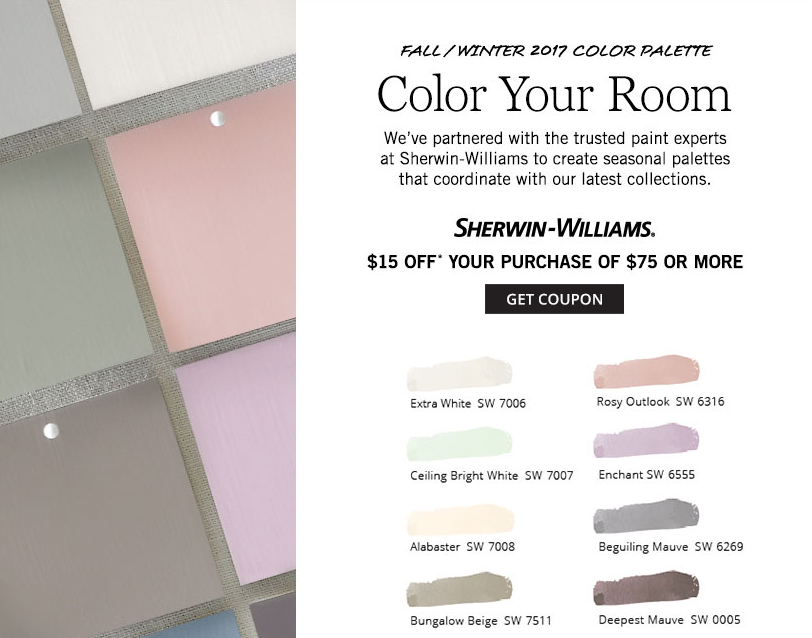
Source: Pottery Barn
Customers could coordinate paint colors with picture-perfect Pottery Barn furniture for a mutually beneficial partnership -- and style assistance for both brands' customers to boot. "Paint Landing," Pottery Barn's landing page for the partnership, contains helpful blog posts and how-to ideas for do-it-yourself painting and decorating.
3. Casper & West Elm
Co-branding Campaign: Test a Casper Mattress
You may have already heard of Casper -- it's an online mattress and bedding brand that sells mattresses in a box.
Casper mattress unboxing videos like this one have become a hit on YouTube, but despite the brand's 100-day return policy, some shoppers might still be hesitant to buy a mattress without getting the chance to roll around in it first.
Enter West Elm, a high-end furniture company. Casper and West Elm partnered so shoppers could try out the comfy mattress before purchasing -- and so West Elm could advertise its chic bedroom furniture.

Source: Casper
This is another example of a mutually beneficial co-branding partnership. It helps both brands appeal to a broader group of shoppers -- after all, Casper doesn't sell furniture, and West Elm doesn't sell mattresses. It also provides shoppers with options -- to try a mattress before buying, or to feel what it would be like sleeping in a bed frame.
4. Taco Bell & Doritos
Co-branding Campaign: Doritos Locos Tacos
When the Doritos Locos Taco was first introduced, it quickly became one of the most popular and widely recognized items in the fast food industry. Frito-Lay took Taco Bell's crunchy taco recipe and gave the Locos Taco its special, signature twist: a Doritos shell. The two companies wanted to keep the shell as close to the original cheesy chips as possible, using the original corn masa recipe and coating it in that distinctive nacho cheese dust.
The taco was an immediate and explosive success: Taco Bell sold an estimated 1 billion units the first year its was introduced.
Taco Bell and Frito Lay advertised the Doritos Locos Taco by wrapping the taco in a classic Doritos bag, reflecting the co-branding partnership and appealing to both brands' audiences. The Doritos Locos Taco's extraordinary success is yet another example of why co-branding can boost reach and sales for both brands.
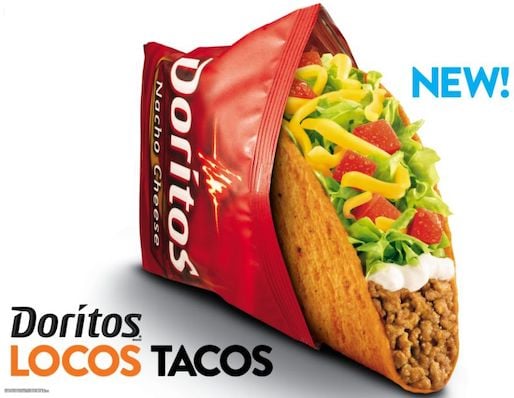
Source: Taco Bell
5. Kanye and Adidas
Co-branding Campaign: Yeezy
Kanye West, best known for his Grammy-winning rap albums, partnered with Adidas to develop a high-end footwear line called Yeezy. The combination of Kanye's personal brand and Adidas' growing streetwear segment has made for robust company earnings and brand growth since it was introduced.
Kanye's celebrity appeal benefits Adidas by creating buzz around its apparel, and the athletic-wear brand gives Kanye a well-established platform to build his high-end clothing line. One of the strongest draws of Yeezy -- and most notably its shoes -- is its exclusivity: Kanye's celebrity status, extremely scarce roll-outs, and the high price tag make the lucky few to own Yeezy sneakers feel a little famous by association.
Adidas' co-branding relationship with Kanye and the resulting cult-like Yeezy following led to a stellar year for the company: in 2019, Adidas' net income climbed 19.5% to $1.9 billion.
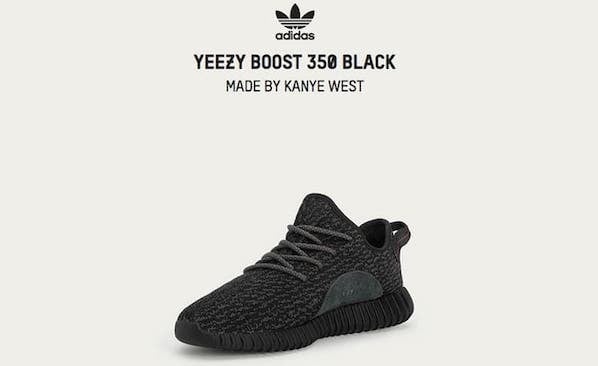
Source: Yeezy
6. BMW & Louis Vuitton
Co-branding Campaign: The Art of Travel
Car manufacturer BMW and designer Louis Vuitton may not be the most obvious of pairings. But if you think about it, they have a few important things in common. If you focus on Louis Vuitton's signature luggage lines, they're both in the business of travel. They both value luxury. And finally, they're both well-known, traditional brands that are known for high-quality craftsmanship.
These shared values are exactly why this co-branding campaign makes so much sense. In their partnership, BMW created a sports car model called the BMW i8, while Louis Vuitton designed an exclusive, four-piece set of suitcases and bags that fit perfectly into the car's rear parcel shelf.

Source: Louis Vuitton
Although the four-piece luggage set goes for a whopping $20,000, the price is right for the target customer, as the BMW i8 starts at $135,700. A price like that kind of makes that luggage set seem like a drop in the bucket.
Not only does the luggage fit perfectly size-wise, but its design and appearance fit perfectly with BMW's image: sleek, masculine, and high-quality. Turns out both the luggage and some parts of the car's interior use carbon fiber, strong-yet-light composite material.
"This collaboration with BMW i epitomises our shared values of creativity, technological innovation and style," said Patrick-Louis Vuitton, head of special orders at Louis Vuitton. "Our craftsmen have enjoyed the challenge of this very special project, using their ingenuity and attention to detail to create a truly made to measure set of luxury luggage. This is a pure expression of the art of travel."
7. Starbucks & Spotify
Co-branding Campaign: First-of-Its-Kind Music Ecosystem
Starbucks scaled up a premium coffee shop experience into a massive global brand, using music to create an ambience around its coffee. Spotify, a music streaming platform, has powered almost 25 billion hours of listening around the world. Starbucks and Spotify forged an innovative co-branding partnership to build a "music ecosystem", offering artists greater access to Starbucks consumers and giving Starbuck access to Spotify's expansive discography.
Through the initiative, Starbucks employees get a Spotify premium subscription, with which they can curate playlists (that patrons can access through the Starbucks Mobile App) to play throughout the day in the shop. This music ecosystem is designed to expand the coffeehouse environment that Starbucks is known for while giving artists greater exposure to Starbucks customers.
The "musical-ecosystem" partnership is mutually beneficial, an opportunity for the companies to reach the other's audience without sacrificing their brand.
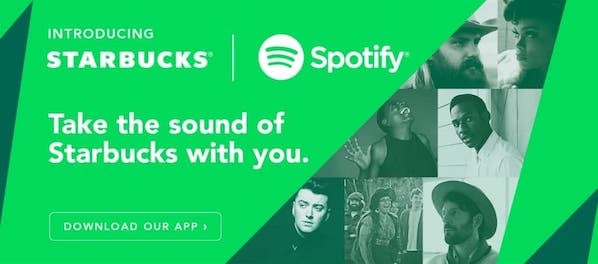
Source: Spotify
8. Apple & MasterCard
Co-branding Campaign: Apple Pay
Sometimes, co-branding partnerships aren't just cool projects between two companies -- they actually have practical value when the companies work together.
When Apple released the Apple Pay app, the brand effectively changed how people perform transactions. This app allows people to store their credit or debit card data on their phone, so they can use them without physically having the card with them. But in order for this app to succeed, it needs credit card companies to integrate with this technology. By the same token, credit card companies also face more competition themselves if they aren't compatible with the latest consumer purchasing tool.
To get out ahead of its competition, MasterCard became the first credit card company to allow its users to store their credit and debit cards on Apple Pay. MasterCard not only showed support of a major consumer tech developer in this partnership -- it evolved along with its own customers in how they choose to make purchases at the counter.
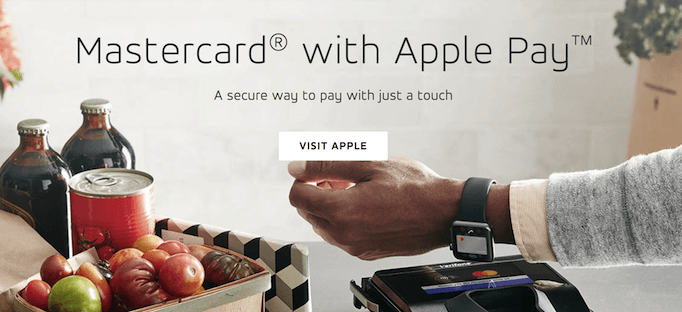 Source: MasterCard
Source: MasterCard
9. Airbnb & Flipboard
Co-branding Campaign: Experiences
You've probably heard of Airbnb, the room-sharing application that allows you to find convenient lodging hosted by real people. But its newest partner, Flipboard, might not have been on your radar until now.
Flipboard is a news aggregator that collects news and topical content that users are sharing on social media, and allows you to "flip" through the material much like a social media feed. Well, Airbnb recently teamed up with Flipboard to create Experiences, which serve Airbnb users with lifestyle content tailored to their interests and shared by people with similar interests as the reader.
The ongoing campaign recently led to another co-created product called Trips, which allows Airbnb users to connect with hosts on common interests and actually book these experiences when traveling. This partnership is an impressive example of how businesses can connect their customers with information that caters to their individual interests and drive usage of the product as a result.
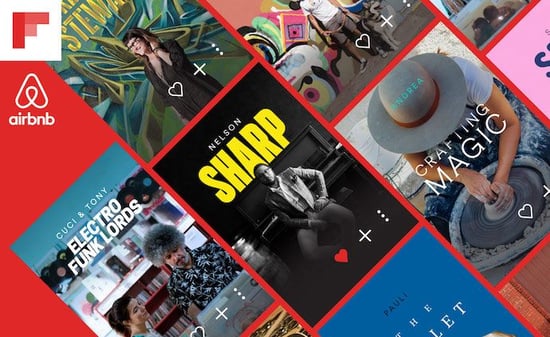 Source: Flipboard
Source: Flipboard
10. Uber & Spotify
Co-branding Campaign: Soundtrack for Your Ride
Music-streaming app Spotify partnered with ride-hailing app Uber to create "a soundtrack for your ride." This is a great example of a co-branding partnership between two very different products with very similar goals -- to earn more users.
Here's how it works: When riders are waiting for an Uber ride, they're prompted to connect with Spotify and become the DJ of their trip. Users can choose from their own playlists to determine what they'll listen to.
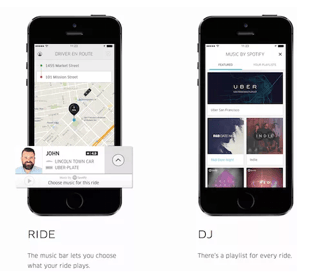 Source: The Verge
Source: The Verge
This smart co-branding partnership helps fans of Uber and Spotify alike enjoy better experiences thanks to the app. And they might be more interested in picking Uber and Spotify over competitors knowing they can enjoy their next ride listening to their favorite tunes.
11. Levi's & Pinterest
Co-branding Campaign: Styled by Levi’s
Levi Strauss & Co. -- one of the oldest and most recognized jean brands in the world -- recently joined forces with Pinterest, a social platform where users pin posts they like to their user profiles. People often turn to Pinterest for fashion inspiration, making a co-branding partnership with Levi's a natural partnership. Styled by Levi's is a new initiative between Pinterest and Levi's offers a "personalized styling experience," or style insights tailored to each user's tastes and preferences.
The partnership offers an authentic and individualized brand relationship, which is difficult to come by in an increasingly digital environment. Pinterest offers Levi's a leading social platform with millions of users interested in visual offerings, and Levi's meets these needs with digital personalization and visual-focused boards.
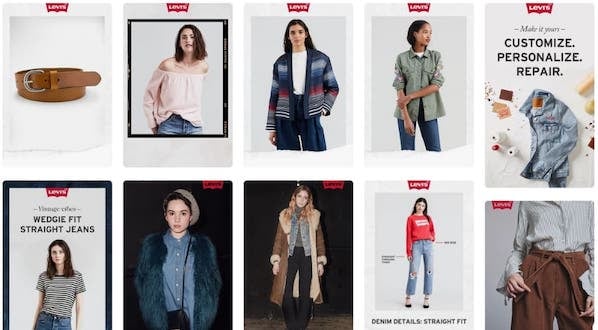
Source: Styled by Levi's
12. BuzzFeed & Best Friends Animal Society
Co-branding Campaign: Emma Watson + Kittens
Some co-branding campaigns are more complicated than others. This example from BuzzFeed and Best Friends Animal Society is one of the simplest ones out there -- and it goes to show a great co-branding effort doesn't have to take months of planning or millions of dollars.
For this campaign, the folks at Best Friends Animal Society wanted to leverage BuzzFeed's readership of over 200 million people. To do this, they partnered with the folks at BuzzFeed to set up and publish an article called, "We Interviewed Emma Watson While She Played With Kittens And It Was Absolutely Adorable," which you can read here. The article is exactly what it sounds like: Harry Potter and Beauty and the Beast star Emma Watson answered fans' questions while she played with cute kittens.
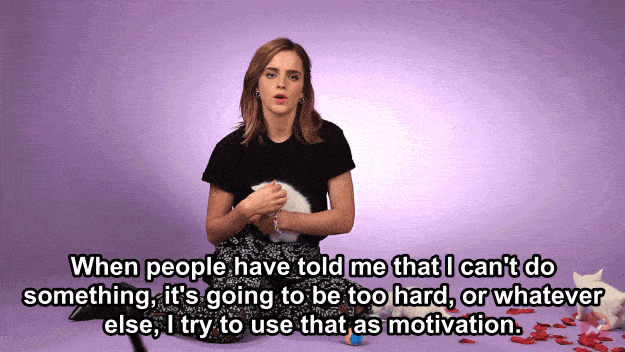
Source: BuzzFeed
The article ends with a CTA advertising that the kittens featured in the video are, in fact, adoptable -- a win-win for both partners.
13. Alexander Wang & H&M
Co-branding Campaign: High-End Fashion
Anyone who's designer-conscious knows Alexander Wang and H&M aren't exactly the same caliber when it comes to quality. Shoes by Alexander Wang tend to go for around $350 a pair, whereas shoes sold by H&M tend to go for more like $35 a pair. See what I mean?
But that discrepancy in pricing is exactly why the two brands decided to partner with one another. To support their brand positioning as trendy and fashionable, H&M has traditionally paired with high-end fashion brands to offer exclusive branded items for a limited time.
In exchange, those high-end brands -- like Alexander Wang -- can expose their brand name to "a new generation of potential consumers, who will increasingly aspire to owning more pieces from his high end collection," writes Michelle Greenwald for Forbes.
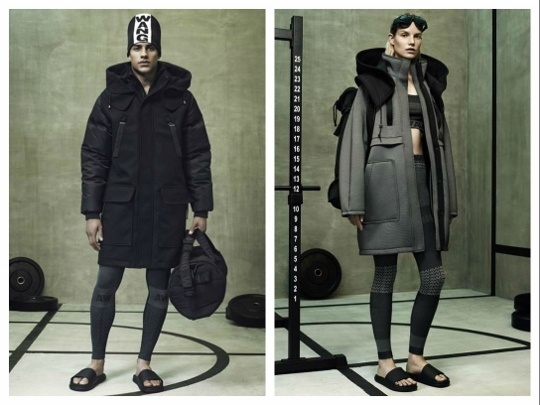
Source: Snobette
14. CoverGirl & Lucasfilm
Co-branding Campaign: Light Side and Dark Side Makeup
Whenever a new installment of the beloved "Star Wars" series is released in theaters, it causes global pandemonium, and the release of "Star Wars: Episode VII The Force Awakens" in 2015 was no exception. The series' parent company, Lucasfilm, partnered with CoverGirl to capture a broader audience to get fans new and old excited about the movie's release.
You might be wondering, "What do "Star Wars" and makeup have in common?" And the cleverness of this partnership is evident in the answer.
In the past, the space-age action movies were almost exclusively advertised and targeted toward men and boys. But in this day and age, that's nonsense -- because people of all genders can be interested in space exploration and makeup contouring alike.
The line was designed by famed makeup artistPat McGrath, and it features two styles: the Light Side and the Dark Side, which loyal "Star Wars" fans will recognize as the sides of good and evil in the movies.
This co-branding partnership was a win for both brand. Lucasfilm captured more attention and got CoverGirl shoppers (many of whom are young women) excited about the film's release. And CoverGirl hopped on the "Star Wars" advertising bandwagon that took over the internet, stores, and TV leading up to the film's release.
15. Amazon & American Express
Co-branding Campaign: Amazon Business American Express Card
Ecommerce giant Amazon is a global enterprise with millions of users and almost two million businesses that sell on their platform. Amazon is looking to improve the way small businesses sell on their platform, so they've partnered with American Express on a co-branded credit card.
The card will help users buy goods and services, but also provide enhanced data insights on their purchasing activity. American Express and Amazon share a commitment to help small businesses grow in the U.S., and by combining their efforts, the two companies can enhance their performance while building brand trust.
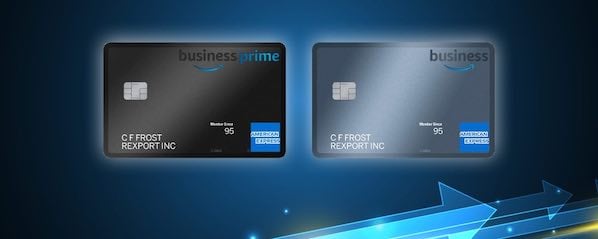
Source: Amazon Business
16. UNICEF & Target
Co-branding Campaign: Kid Power
If you have the chance to partner for a not-for-profit cause, it can pay off in multiple ways.
In 2015, Target partnered with UNICEF on a campaign called Kid Power, which committed Target to one of UNICEF's sustainable development goals (SDGs). The retailer sold kid-friendly fitness trackers encouraging the wearer to complete various fitness activities, which ultimately helped deliver food packets to underprivileged children around the world.
By selling this fun, inexpensive fitness product, Target encourages children to embrace a healthy lifestyle and uses kids' successes to supply underserved communities with the resources they need. It's an ongoing partnership that generates awareness of global malnutrition, helps UNICEF meet its demanding SDGs, and opens up Target to a demographic of giving families they might otherwise have had access to.
By the way, you can get your child a Kid Power band here.
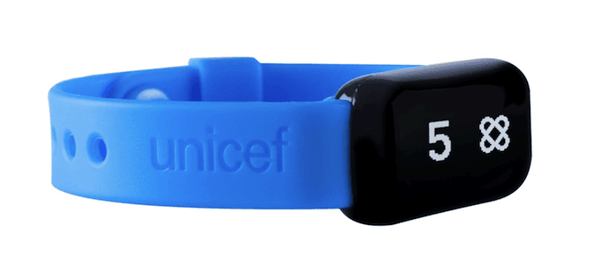
17. Nike & Apple
Co-branding Campaign: Nike+
Athletic brand Nike and technology giant Apple have been working together since the early 2000s, when the first line of iPods was released.
The co-branding partnership started as a way to bring music from Apple to Nike customers' workouts using the power of technology: Nike+iPod created fitness trackers and sneakers and clothing that tracked activity while connecting people to their tunes.
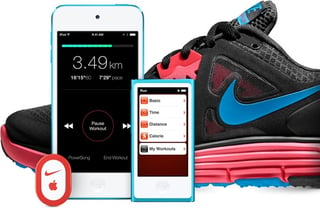
Source: Apple
The partnership has since evolved to become Nike+ -- which uses activity tracking technology built into athletic clothing and gear to sync with Apple iPhone apps to track and record workout data. Tracking transmitters can be built into shoes, armbands, and even basketballs to measure time, distance, heart rate, and calories burned.
It's a genius co-branding move that helps both parties provide a better experience to customers -- and with the popularity of fitness tracking technology, Nike+ is ahead of the curve by making it easy for athletes to track while they play.
18. Bonne Belle & Dr. Pepper
Co-branding Campaign: Flavored Lip Balm
Dr. Pepper-flavored lip balm. I mean, it's genius.
Bonne Belle first debuted Lip Smacker, the world’s first flavored lip balm, in 1973, starting with flavors like strawberry, lemon, and green apple. Just two years laterin 1975, they'd forged their first flavor partnership with the timeless Dr. Pepper brand. The result? A lip balm flavor that's been famous for decades among teenage girls.
If you're thinking the connection between lip balm and Dr. Pepper is a little thin, consider the copy on one of their vintage ads: "It’s the super shiny lip gloss with lip-smacking flavor… just like the world’s most original soft drink." And later, "From Bonne Belle of course: the cosmetics company that understands your taste."
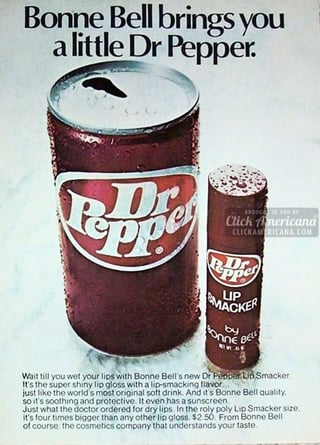
Source:Click Americana
from Hubspot
Comments
Post a Comment